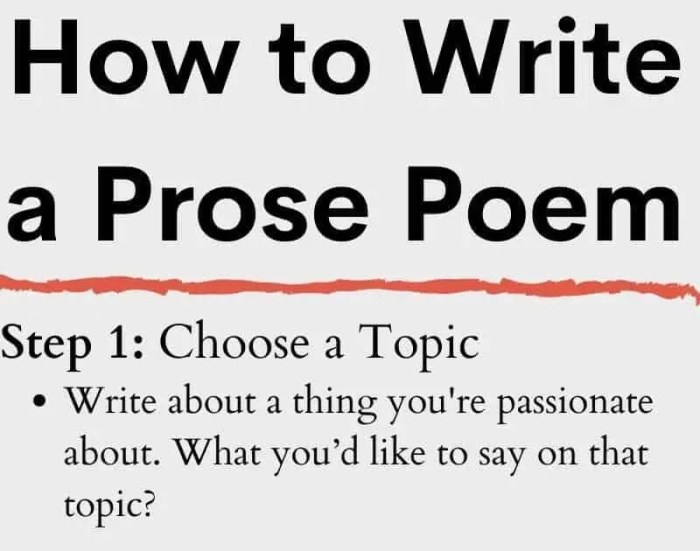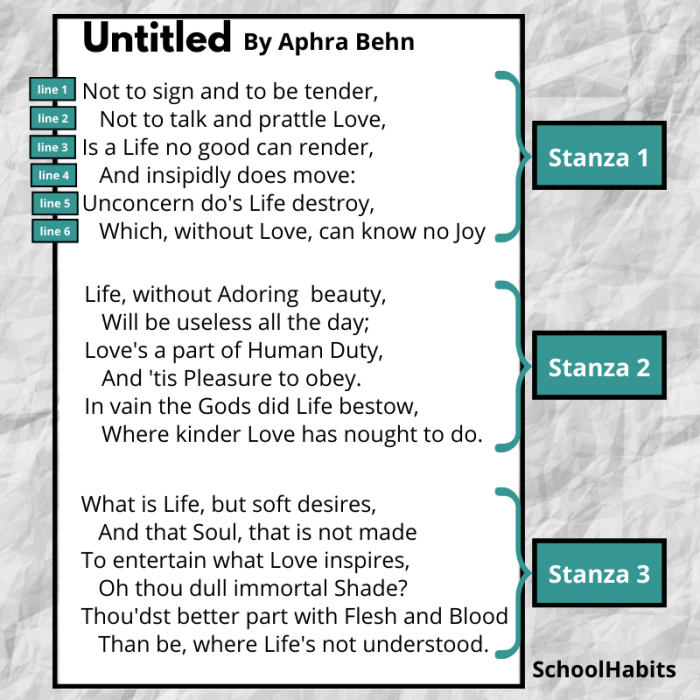Stanzas with no specific pattern – Unpatterned stanzas, devoid of prescribed rhyme schemes or metrical patterns, offer poets boundless creative freedom and expressive possibilities. This absence of structure empowers poets to craft diverse and emotive works that transcend traditional poetic conventions.
Within unpatterned stanzas, poets find liberation from rigid constraints, allowing their thoughts and emotions to flow unrestrained. This freedom fosters a unique and dynamic form of poetry, where rhythm and flow emerge organically from the interplay of words and ideas.
Stanzas with No Specific Pattern: Definition and Characteristics

Stanzas with no specific pattern, also known as free verse stanzas, are a type of poetry that lacks a set rhyme scheme or meter. This means that the lines in the stanza do not follow a predictable pattern of rhyme or rhythm.
Free verse stanzas allow poets to express themselves more freely and to focus on the content of their poems rather than on adhering to a specific form.Some examples of poems with stanzas that lack a specific pattern include Walt Whitman’s “Song of Myself” and William Carlos Williams’ “The Red Wheelbarrow.”
Creative Freedom and Expression in Unpatterned Stanzas
Poets gain a great deal of freedom by not adhering to a specific pattern in their stanzas. This freedom allows them to explore a wider range of topics and to experiment with different forms of expression. Unpatterned stanzas also allow poets to create a more personal and intimate connection with their readers.Some
examples of poems that effectively utilize unpatterned stanzas include Allen Ginsberg’s “Howl” and Sylvia Plath’s “Daddy.”
The Impact on Poetic Structure and Flow
The lack of a specific pattern in stanzas can have a significant impact on the overall structure and flow of a poem. Unpatterned stanzas can create a sense of movement and energy, or they can be used to create a more relaxed and meditative atmosphere.
The poet’s choice of stanza form can also affect the way the poem is read aloud.Some examples of poems where the lack of pattern contributes to the poem’s impact include Ezra Pound’s “The Cantos” and T.S. Eliot’s “The Waste Land.”
Emotional Expression and Unpatterned Stanzas
Unpatterned stanzas can be particularly effective in conveying emotions. The lack of a specific pattern can allow the poet to express their emotions more directly and honestly. Unpatterned stanzas can also be used to create a sense of chaos or confusion, which can be effective in conveying strong emotions such as anger or grief.Some
examples of poems where unpatterned stanzas effectively convey emotions include Emily Dickinson’s “Because I could not stop for Death” and Robert Frost’s “Stopping by Woods on a Snowy Evening.”
Contemporary Usage and Evolution, Stanzas with no specific pattern
Unpatterned stanzas are a popular choice for contemporary poets. This is because they allow poets to experiment with different forms of expression and to create poems that are more personal and intimate. Unpatterned stanzas are also well-suited for exploring complex and challenging topics.Some
examples of contemporary poems that utilize unpatterned stanzas effectively include Louise Glück’s “The House on Marshland” and Billy Collins’ “Picnic, Lightning.”
Expert Answers
What defines stanzas with no specific pattern?
Stanzas with no specific pattern, also known as free verse stanzas, lack a consistent rhyme scheme or metrical structure, allowing poets to express themselves freely without adhering to traditional poetic forms.
How do unpatterned stanzas enhance creative expression?
Unpatterned stanzas provide poets with greater flexibility and freedom to explore diverse themes, emotions, and ideas. By breaking away from prescribed patterns, poets can create works that are more authentic, personal, and reflective of their unique voices.
What is the impact of unpatterned stanzas on poetic flow?
Unpatterned stanzas can create a sense of spontaneity and fluidity in poetry. The absence of rigid structures allows poets to experiment with rhythm, pacing, and line breaks, resulting in a more dynamic and organic flow of language.
